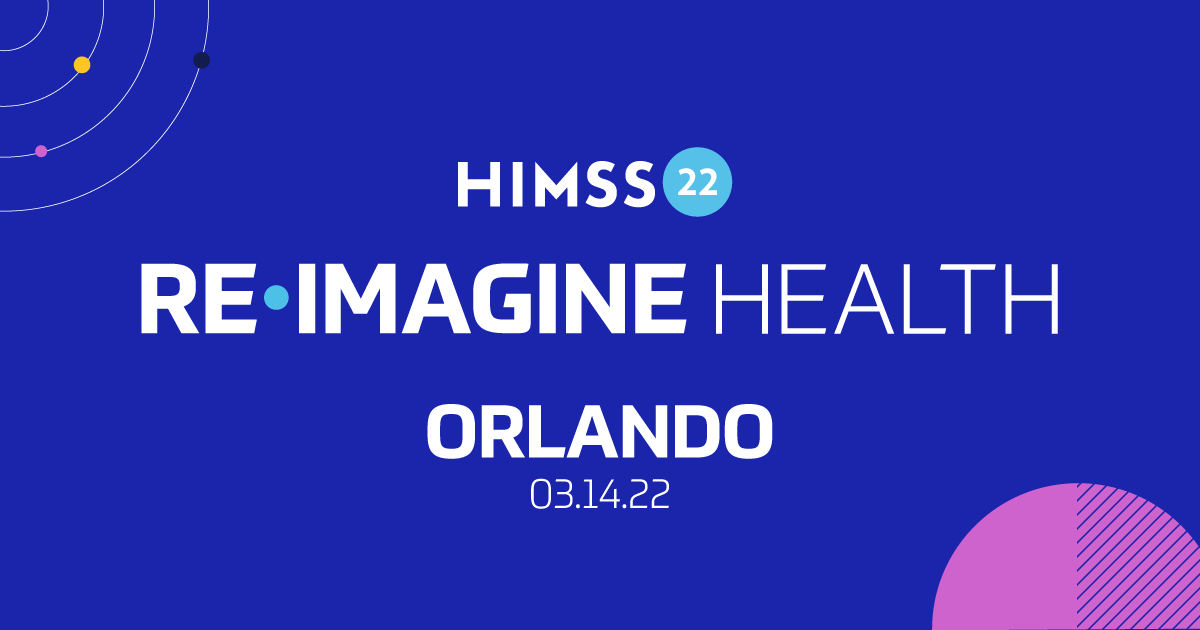Last month I had the opportunity to attend HIMSS 22, perhaps the largest healthcare IT conference, and by far the biggest conference I have been to. At HIMSS, I split my time between exploring the vast exhibition hall and attending education sessions. The exhibition hall was crowded with tech companies with services that ranged from providing patient communication platforms to automation and electronic tools for administrative operations to the physical hardware in the hospital. While the exhibition hall was flashy and fun, I found the lecture sessions valuable for furthering my understanding of healthcare innovation, especially within academic medicine. Here are some takeaways from a few of the talks I attended:
Innovating to Improve Health Outcomes
Creative partnerships can help to spread public health messages. The pandemic demonstrated that organizations can enact change quickly. Creative methods of communication, such as the collaborations between Dr. Fauci and celebrities, are great ways to engage and establish partnerships to disseminate COVID-19 safety information on social media platforms
We must consider health equity across all stages of product development. The leaders of health equity at Google and Accenture discussed how they are addressing health disparities within their organizations. Both Dr. Ankoor Shah (Accenture) and Dr. Ivor Horn (Google) argued that to sustain health equity initiatives, global tech companies must embed health equity into their business practices. This means tackling disparities at all product stages across the horizontal from R&D to the market, as well as from the consumer’s, caregiver’s, and community’s perspectives.
Closing the Digital Divide through Open Innovation
We must think in broader terms about why there is a digital divide. When thinking about health equity, it is important to consider the patients, clinicians, and medical centers that are getting left behind and why. The digital divide is not the result of what happens at the healthcare facility, but also the social determinants factors such as income, location, and education. For patients, major barriers include access to broadband internet and devices and having technological literacy. For some clinicians and medical centers, a digital divide can look like not having an EHR system.
An open innovation model can help to increase access to new ideas. Innovation is often driven by intellectual property, competitive, not scalable, and without a generalizable blueprint. With an open innovation model, however, perhaps innovative solutions can be more accessible, including to institutions who do not have innovation labs. UC Davis Digital Health Innovation and AWS are partnering to open the Cloud Innovation Center, where they hope to foster the “Stack Overflow for healthcare.”
Digital Health 3.0: Innovation > Validation > Equity
Bias in datasets will only propagate health disparities. Algorithmic bias is common because the datasets used to create the artificial intelligence (AI) algorithms often misrepresent people of color, women, and lower socioeconomic groups. Without first addressing inequities in the datasets, AI healthcare solutions have the potential to propagate health disparities. The Mayo Clinic Cloud is trying to reduce bias in evaluating the efficacy of AI models by making the de-identified data from 10 million patients available on the cloud.
There is an opportunity for AI tools to make an impact on healthcare delivery. Randomized clinical trials are the gold standard in validation studies, but many AI algorithms on the market have only been assessed using retrospective analysis. Moreover, a single AI solution alone is not going to fix healthcare, but perhaps a series of AI tools can assist in the care delivery process. Dr. John Halamka illustrated this idea by pointing out where AI could be used in a disease treatment pathway. For example, first, an AI model to detect one’s colon cancer risk could be used to identify high risk patients. In a colonoscopy, another AI model could be employed to identify polyps. And lastly, an AI solution could be used to develop an optimal care plan for the patient.
Innovating Patient-Centered Solutions in the Live Practice Environment
Live testing of technology solutions with feedback is invaluable for clinicians. The Stanford Nursing Innovation team piloted a new technology solution for clinicians in a patient room. By dedicating a bed on the care floor to the pilot, the team was able to evaluate the solution in a live environment. The proximity of the pilot to the clinical workspace made participating in the pilot convenient for the clinician team, increasing participation and accessibility to both day and night shift workers. The innovation team held live demos, hosted vendors to answer questions, and solicited feedback at the pilot site. Additionally, they used the location to record educational and training videos.
Overall, I enjoyed the opportunity to attend lectures on a variety of topics by speakers of various backgrounds. The talks provided insight into how other academic medical centers are implementing digital health innovation through their operations, partnerships, and research areas. These topics also sparked conversations with my team on how we could apply the lessons learned to improve the innovation services we provide our system. Maybe one day I will deliver a presentation at HIMSS about how the iHub is fostering digital health innovation at the Brigham that inspires a first-time conference attendee like me.

